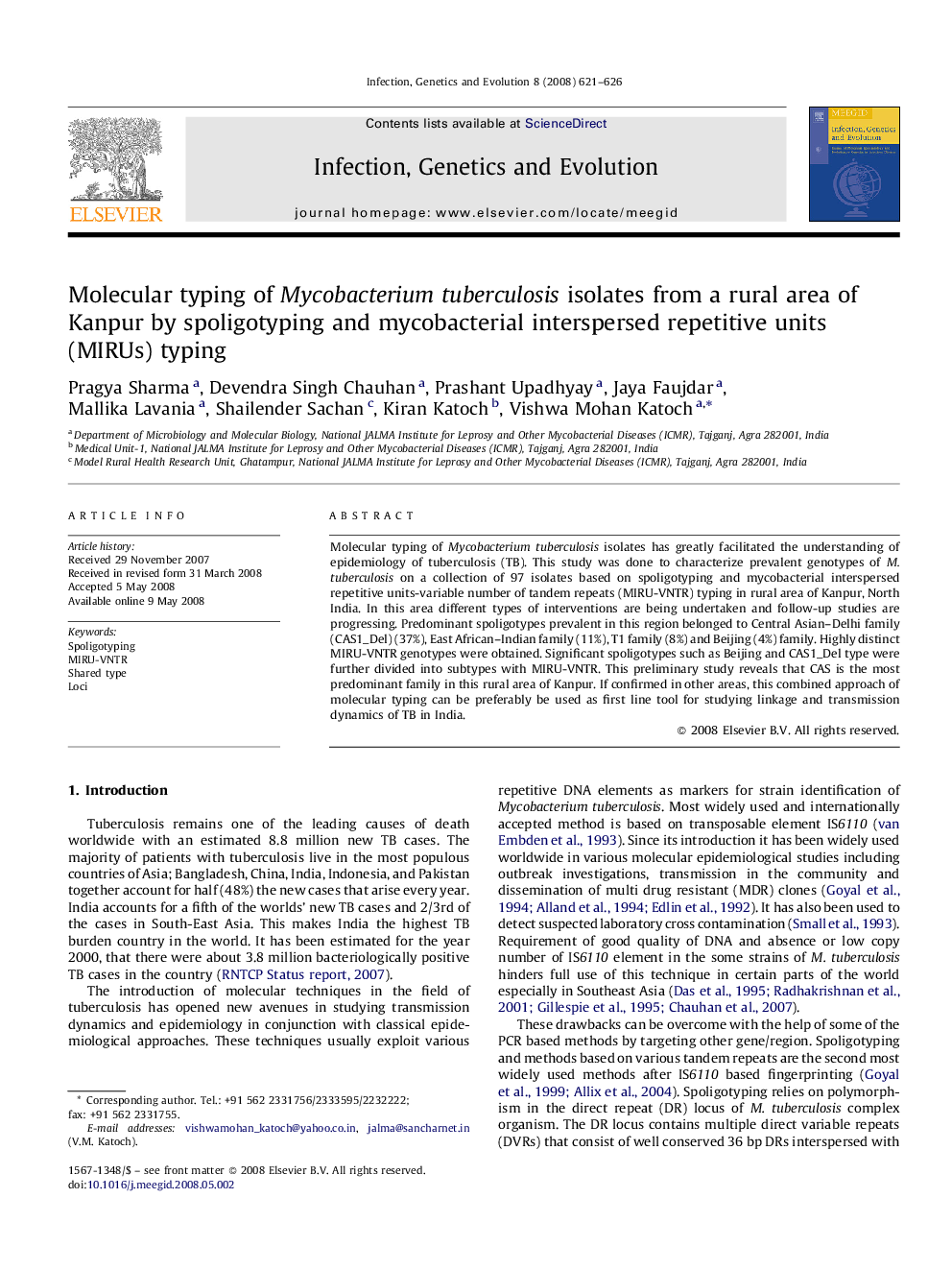| Article ID | Journal | Published Year | Pages | File Type |
|---|---|---|---|---|
| 2823555 | Infection, Genetics and Evolution | 2008 | 6 Pages |
Molecular typing of Mycobacterium tuberculosis isolates has greatly facilitated the understanding of epidemiology of tuberculosis (TB). This study was done to characterize prevalent genotypes of M. tuberculosis on a collection of 97 isolates based on spoligotyping and mycobacterial interspersed repetitive units-variable number of tandem repeats (MIRU-VNTR) typing in rural area of Kanpur, North India. In this area different types of interventions are being undertaken and follow-up studies are progressing. Predominant spoligotypes prevalent in this region belonged to Central Asian–Delhi family (CAS1_Del) (37%), East African–Indian family (11%), T1 family (8%) and Beijing (4%) family. Highly distinct MIRU-VNTR genotypes were obtained. Significant spoligotypes such as Beijing and CAS1_Del type were further divided into subtypes with MIRU-VNTR. This preliminary study reveals that CAS is the most predominant family in this rural area of Kanpur. If confirmed in other areas, this combined approach of molecular typing can be preferably be used as first line tool for studying linkage and transmission dynamics of TB in India.
